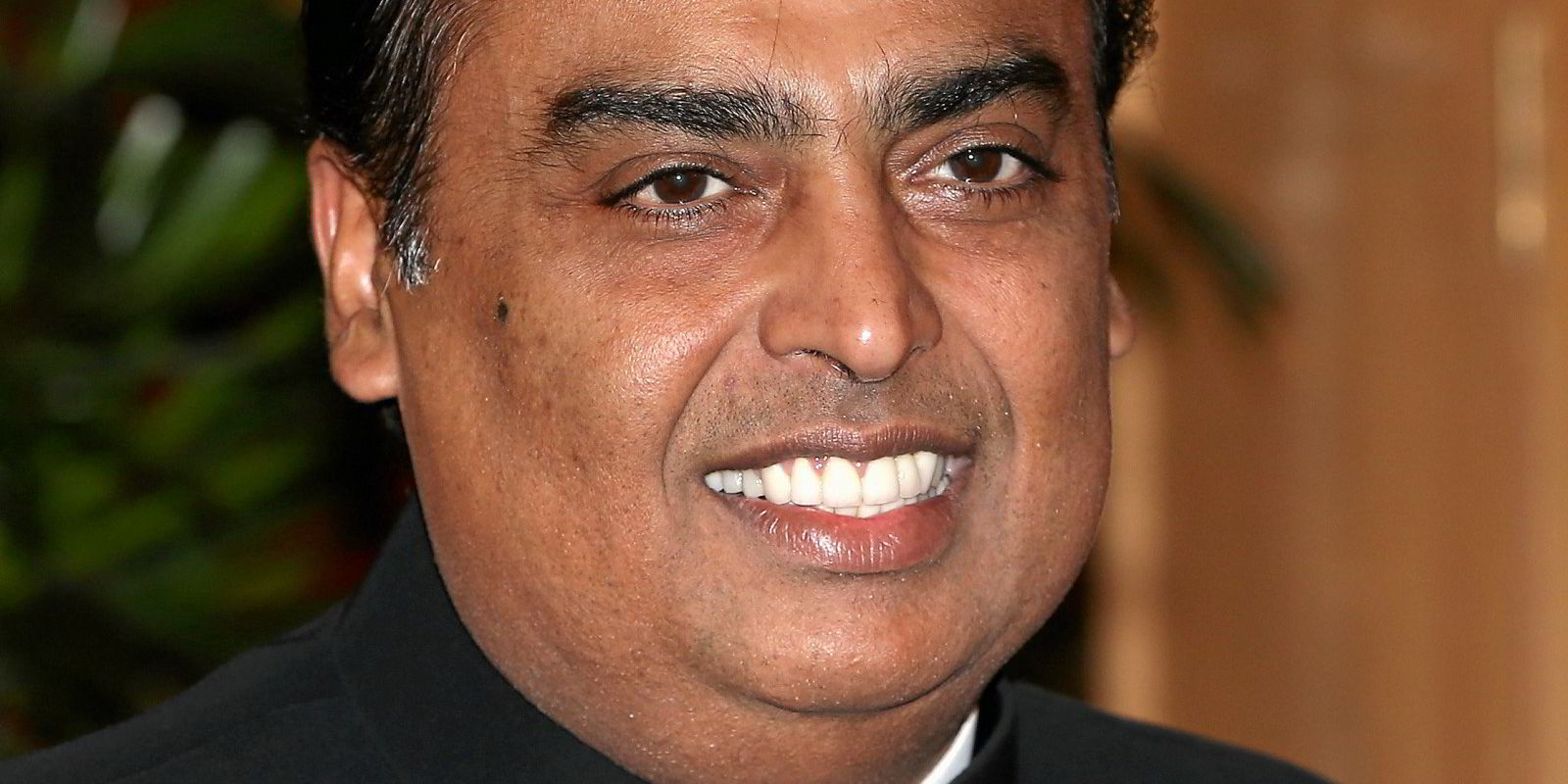
Billionaire Mukesh Ambani, managing director of India's biggest company, Reliance Industries.
Photo: Getty
Mukesh Ambani, one of the world's richest men, makes swift move to snap up wind power pioneer's latest green technology breakthrough
In the summer of 2020, wind turbine pioneer Henrik Stiesdal was experimenting in his basement to see if he could make a low-cost hydrogen electrolyser, accidentally spilling a strong alkaline solution onto his hands and taking off some skin.
Hydrogen: hype, hope and the hard truths around its role in the energy transition
Will hydrogen be the skeleton key to unlock a carbon-neutral world? Subscribe to Accelerate Hydrogen, powered by Recharge and Upstream, and get the market insight you need for this rapidly evolving global market.
Sign up now
“I kind of lost a few fingerprints, so I had some issues with [accessing] my mobile phone,” the Dane tells Recharge.
This week, he signed a deal with the Indian conglomerate Reliance Industries to mass-produce Stiesdal’s ultra-low-cost electrolyser at a new gigafactory in Gujarat state.
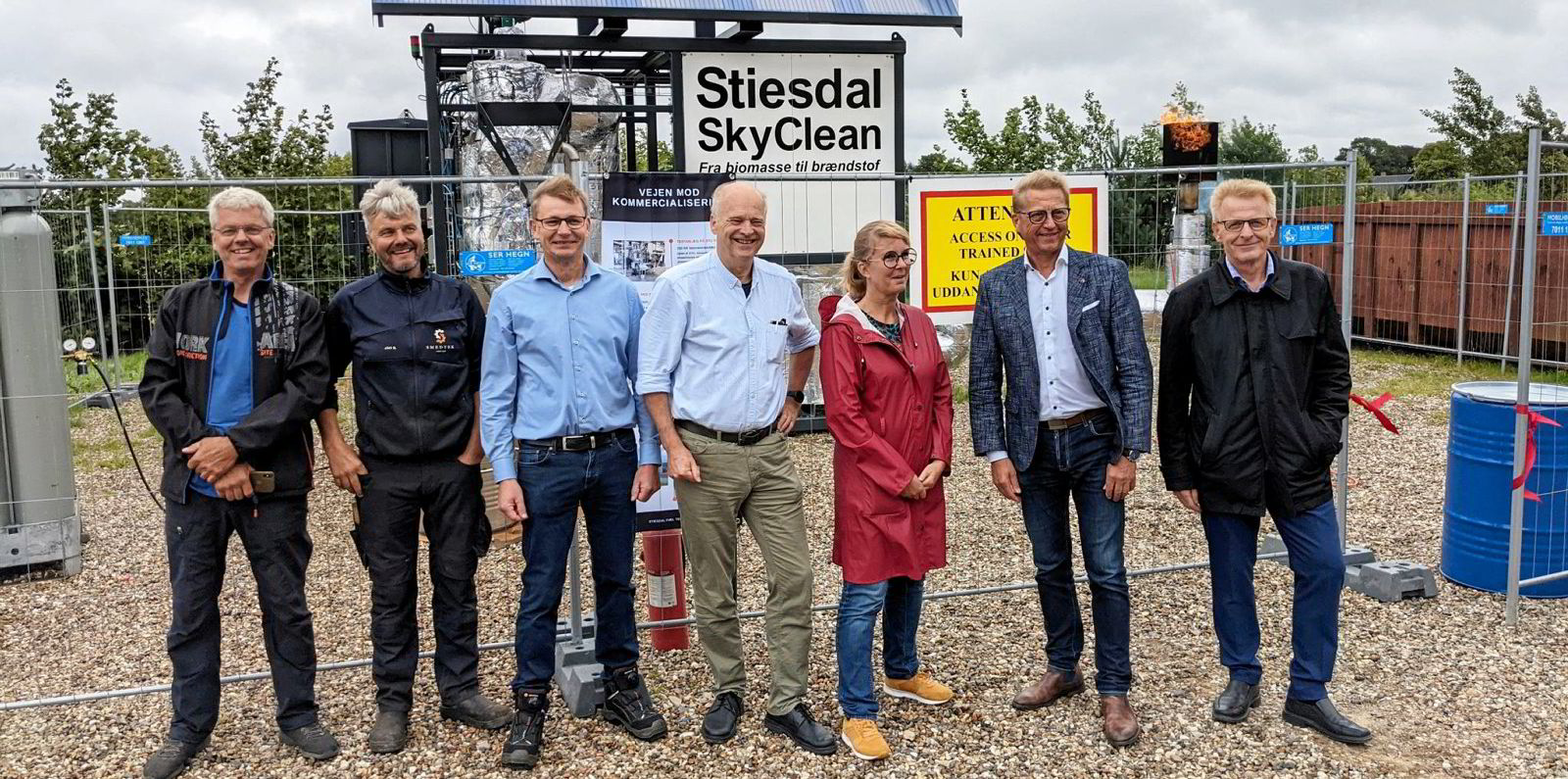
Clean energy pioneer Stiesdal starts up 'stepping stone' CO2-negative green fuel plantRead more
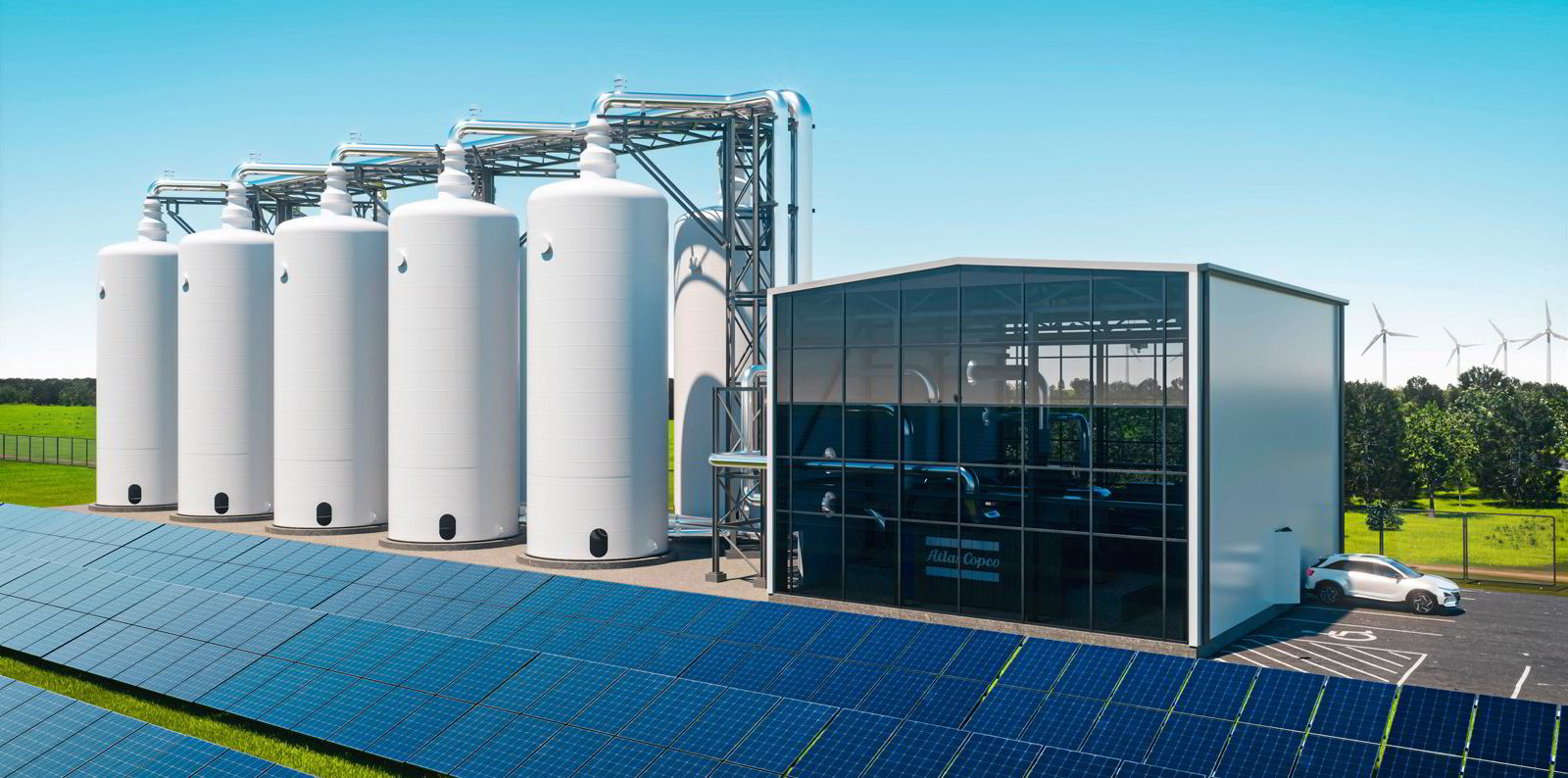
Stiesdal 'hot rocks' energy storage flagship to power up on Danish island of LollandRead more
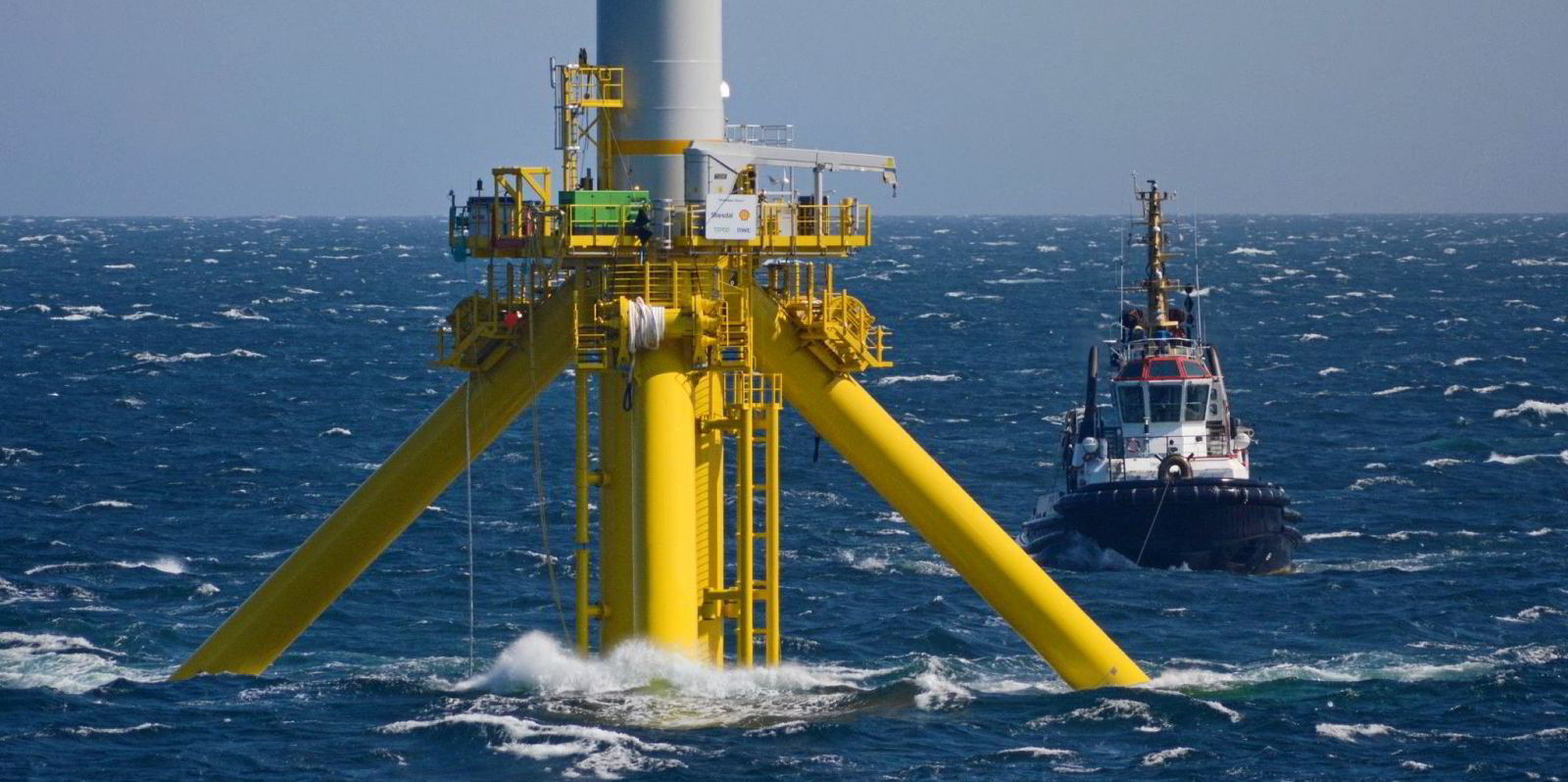
Stiesdal's low-cost TetraSpar floating wind demonstrator installed off NorwayRead more
“The intent of our company [Stiesdal A/S] is that we are seeking impact in the fight against climate change,” said Stiesdal, whose wind turbine designs in the late 1970s helped kickstart the modern wind industry. “And what more impact could you wish for than working with the biggest industrial company in the biggest democracy in the world. That’s kind of a dream come true for us.
“We hope we can support our partner Reliance, and India in general, in a faster green transition than would otherwise have been.”
In a statement issued after the signing of the technology licensing agreement, Reliance managing director Mukesh Ambani — who is said to be Asia's richest man, with a net worth of $100bn — stated: “In partnership with Stiesdal, we will strive to achieve our stated goal of offering hydrogen energy under $1 per kg in one decade — the 1-1-1 target for green hydrogen.
Reliance announced in June that it would invest $10bn in new energy, seeing renewable H2 as “a unique energy vector that can enable deep decarbonisation of many sectors, such as transportation, industry and power”.
The agreement with Reliance comes just two months after Prime Minister Narendra Modi announced a new national hydrogen mission, promising “to make India a global hub for green hydrogen production and export”.
And it comes only a year after Stiesdal subsidiary Stiesdal PtX Technologies completed its first 8kW alkaline electrolyser prototype. The second prototype, a 150kW machine, has only just been commissioned, with a 3MW model — the HydroGen Electrolyser — now in development, with a view to serial production in 2023.
So why has one of the world’s richest men rushed to license and mass-produce a product that has barely made it past the design phase? And what is so special about the new machine?
“We are really doing something that is based on relatively conventional technologies,” Stiesdal tells Recharge. “And on the hardcore electrode surface technology, we are most likely not doing it better than everybody else.”
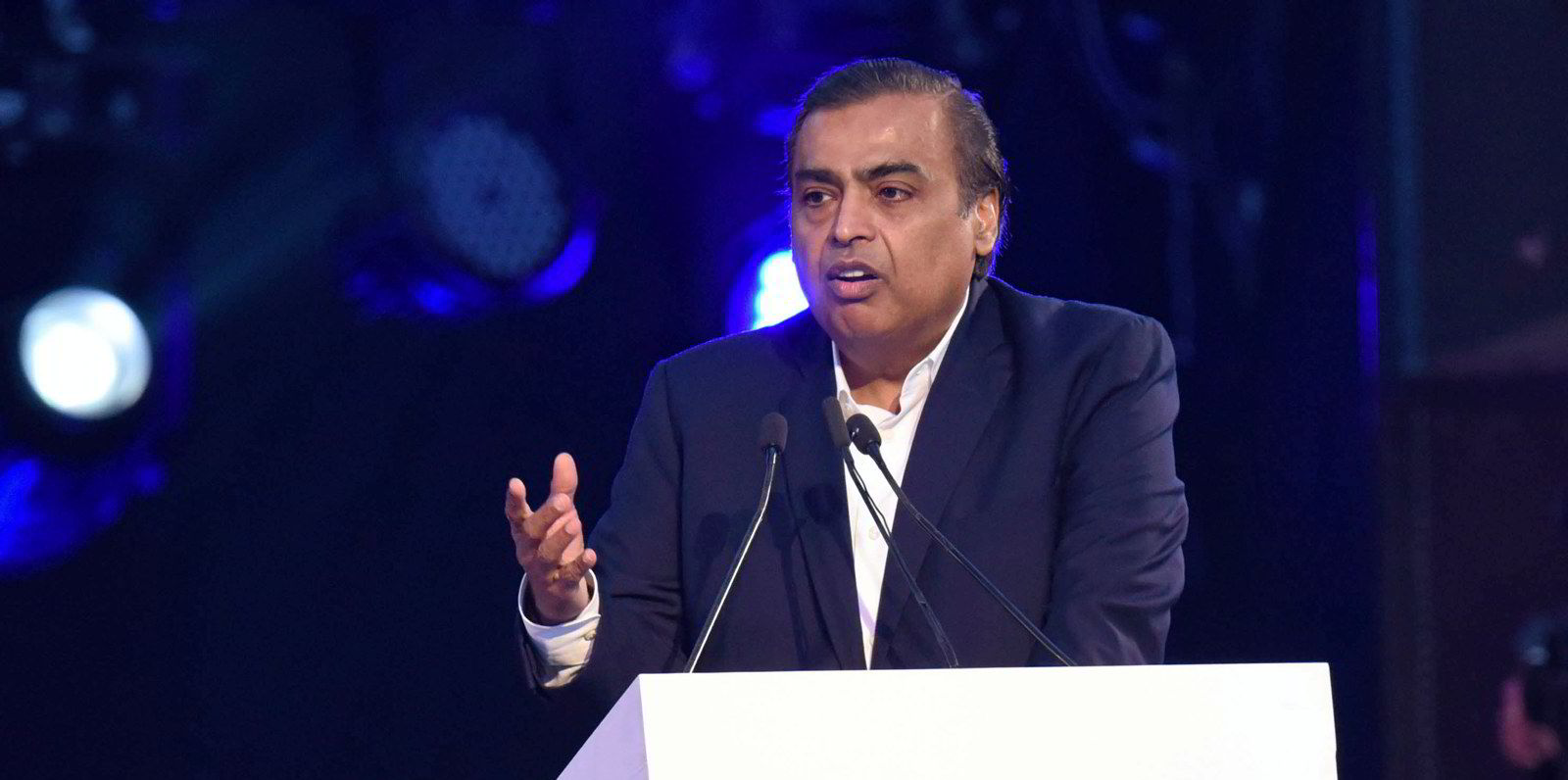
Asia's richest man unveils $10bn 'giga-plan' to turn India's Reliance into clean energy majorRead more
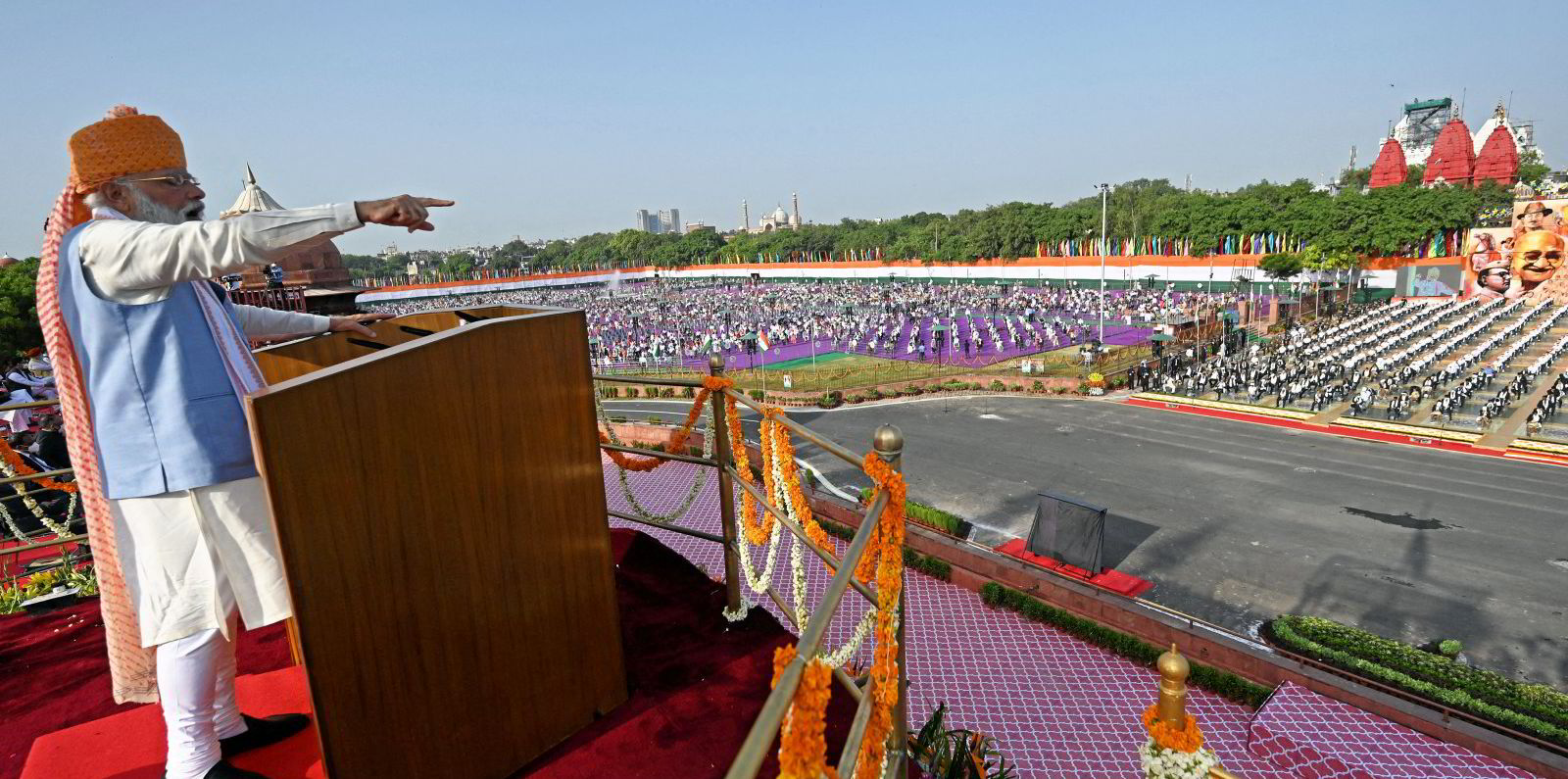
Modi pledges massive green hydrogen 'quantum leap' to Indian energy independenceRead more
However, Stiesdal’s alkaline electrolyser will cost a fraction of the current price of other electrolysers on the market — at about €200 ($231) per kW, he says. This is in a market with typical costs in the range of €500-1,000/kW.
“From the outset, the project was carried out with industrialization as the main target. As so often before, it was about asking what is the lowest cost way you can do this, you can do that, you can do your control system, you can do your cooling and so on. And we have been very, very focused on that from day one — what is the cheapest way in the world we can do this?”
It also helps that the electrolyser has “a few inventive tricks in the set-up of the electrodes… which I cannot disclose until the patents [are approved]”.
Stiesdal explains that he came up with the idea for a cheap electrolyser after realising that his company’s aim of producing carbon-negative aviation fuel from biomass would require the addition of low-cost green hydrogen.
“People said [green hydrogen] is very expensive and it will be a long time before it is competitive. So I looked into it and I asked my usual silly childlike question: why is that? And then I got two messages: renewable energy is expensive and electrolysers are expensive, and that makes an expensive product.
“And I thought, ‘that’s not true, because renewable energy has become very cheap’. And then you can say, ‘okay, but at least electrolysers are expensive’. And then I asked my own stupid questions again: why?
“If we have a belief that electrolysers will become really cheap in 2050, why doesn’t it get really cheap in 2025? If we have a clue how to get there, why don’t we just do it now?”
He and his team came to the conclusion that the main reason that electrolysers were expensive was due to a certain lack of industrialisation.
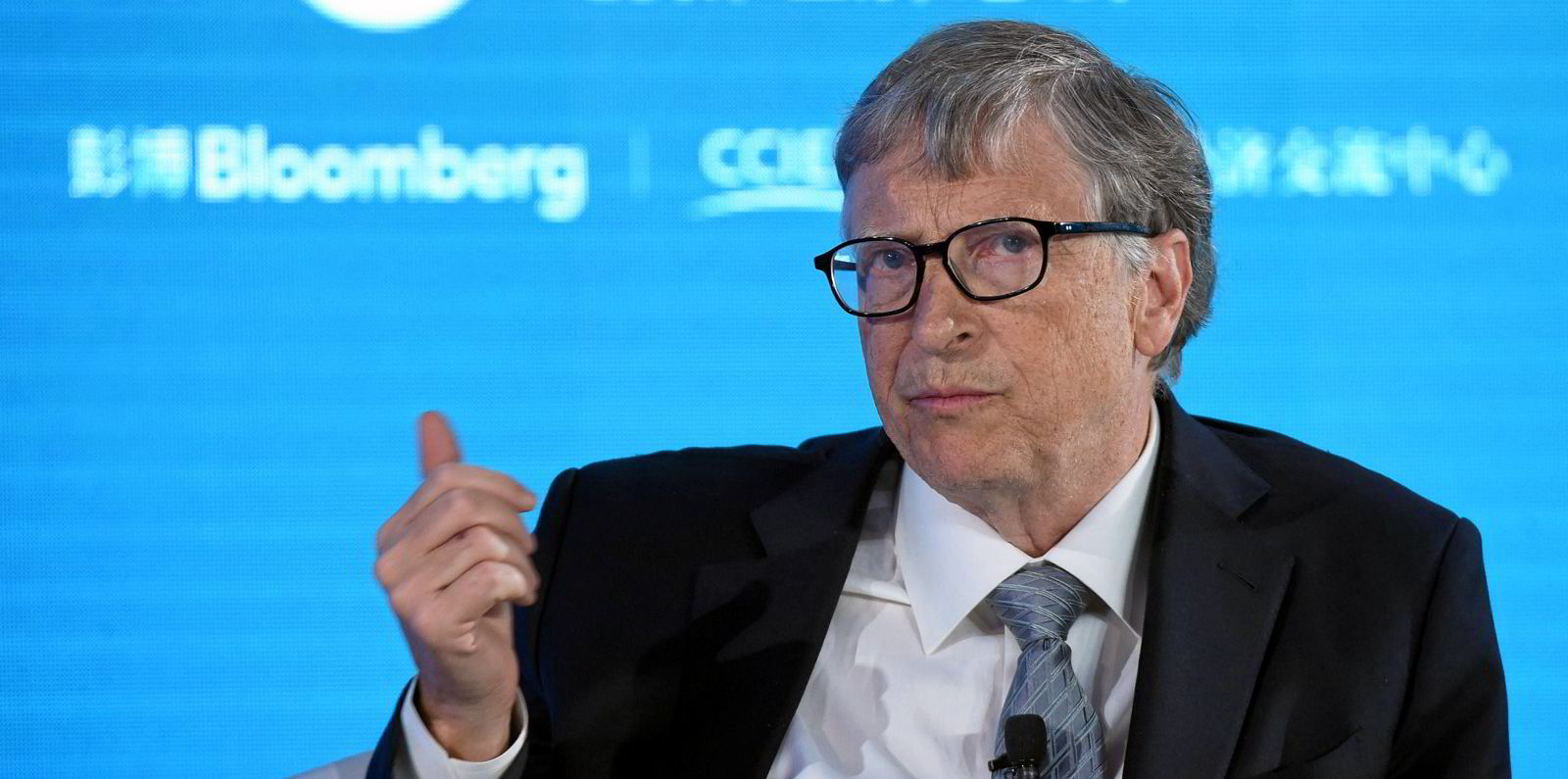
Indian giant Reliance joins Bill Gates to back 'liquid metal' battery for large-scale green power storageRead more
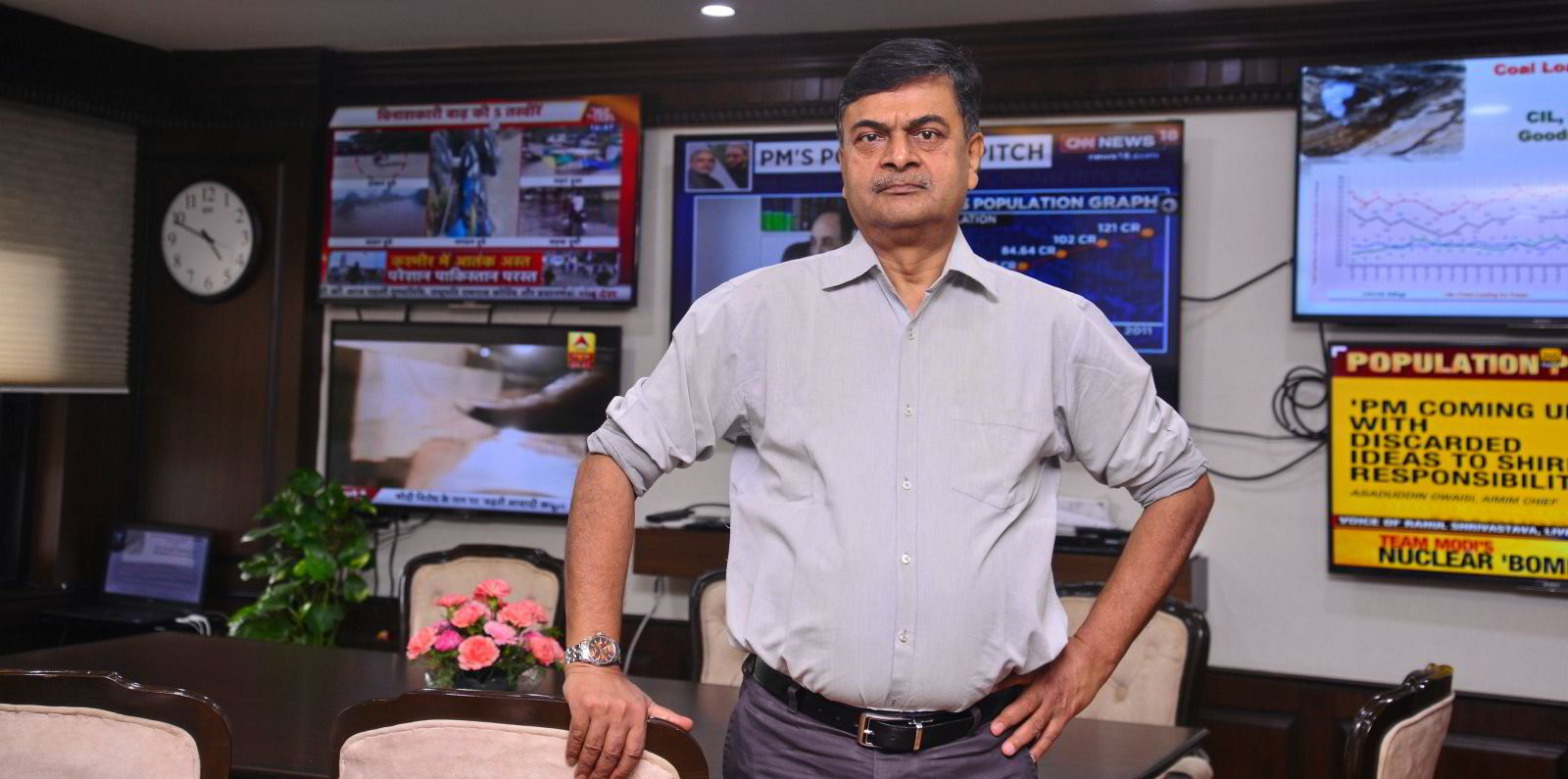
'Use green hydrogen' rule for oil and fertiliser plants as India eyes world-leading marketRead more
“Myself and many of our leadership team come out of the wind industry. And from having been in the wind industry, we have a pretty good impression of what really matters on cost reductions. Because we have seen that what brought the cost [of wind turbines] down was not the brilliant ideas or leading-edge research, what brought the cost down was industrialisation. It was mass production, standardisation, that is what made the difference.”
Stiesdal says he and his team looked at existing electrolyser technology — alkaline, polymer electrolyte membrane (PEM) and soild oxide electrolyser cell (SOEC) — and decided: “We think we can do this cheaper.”
“And what we did was select one of the technologies, which is the good old alkaline electrolyser. It has a big benefit in that it doesn’t need any rare metals, like iridium for PEM, it does not run at many hundreds of degrees, like SOEC. We thought, ‘let’s do the one that we studied in school, the one that they did in Norway at scale in the 1920s'. And then the whole trick has been to refine the set-up, so that it’s done from the start with industrialization in mind.”
Stiesdal A/S teamed up with experts at the Technical University of Denmark to fine-tune the core technology of the new electrolyser. “So in a way, we were kind of cheating a bit, in that we did not aim to develop all the knowledge ourselves from the start. We just turned to the best expertise we could find.”
In very simple terms, Stiesdal PtX Technologies has designed an electrolyser in which every component is cheap, using off-the-shelf equipment wherever possible.
The ever-modest Stiesdal — who managed the construction of the world’s first offshore wind farm in 1991 and was later chief technology officer at Siemens Wind Power — tells Recharge that because the capex of the new electrolyser is so low, green hydrogen can become cost-competitive with highly polluting grey H2 today when powered by solar energy in regions with high irradiation.
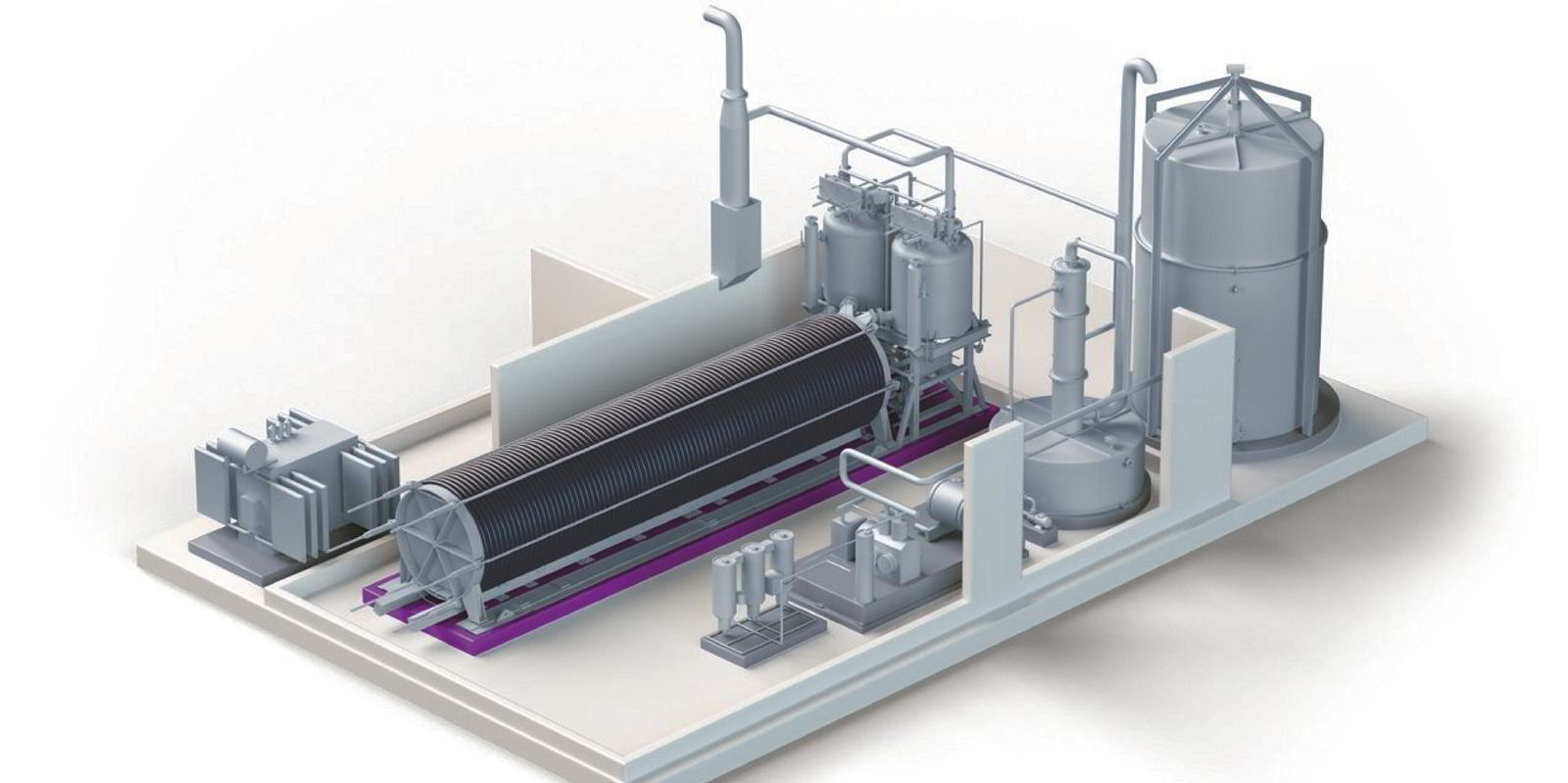
Nel to slash cost of electrolysers by 75%, with green hydrogen at same price as fossil H2 by 2025Read more
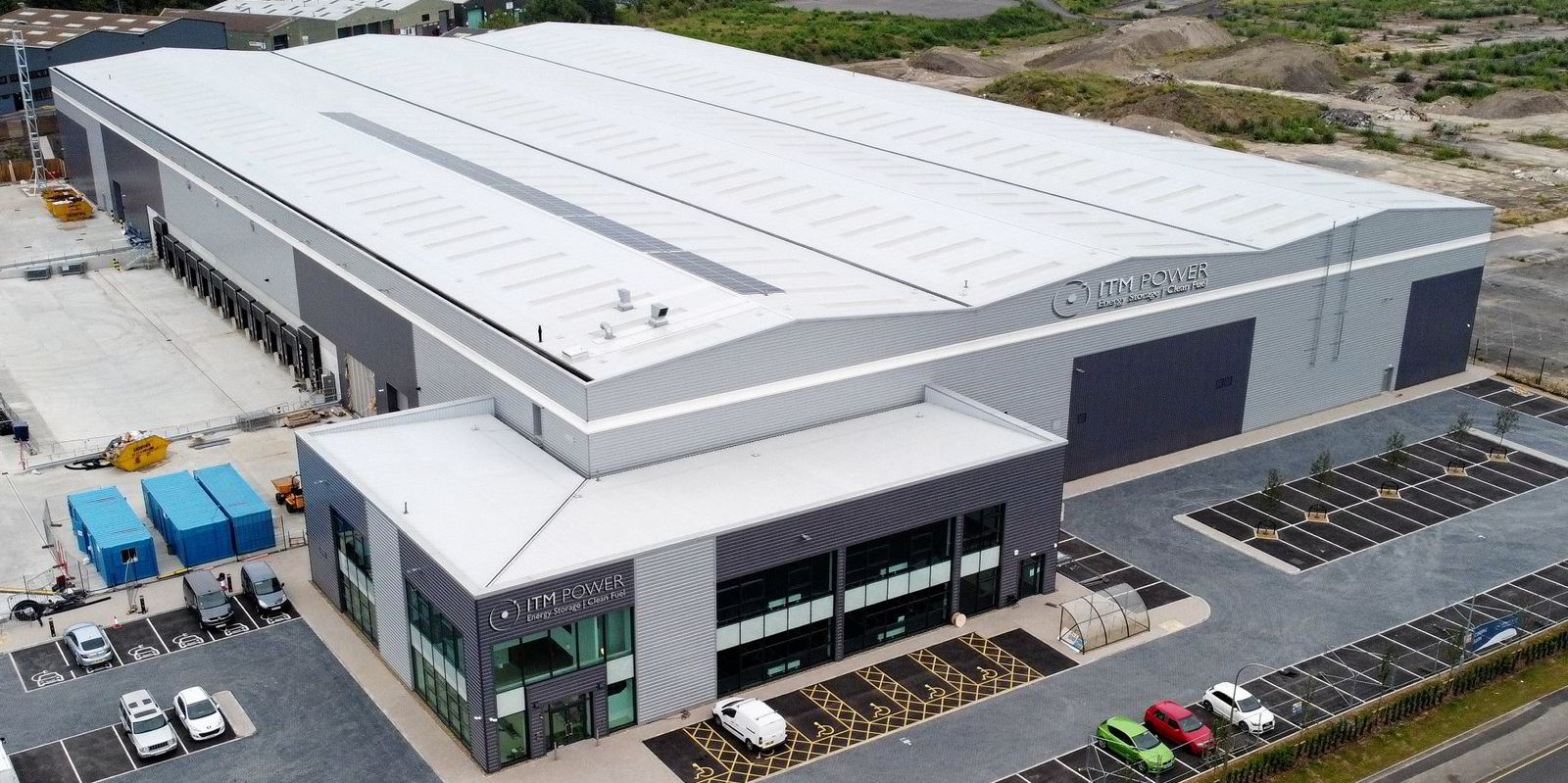
Green hydrogen: ITM Power’s new gigafactory will cut costs of electrolysers by almost 40%Read more
It also means that green hydrogen can become affordable when only using excess renewable power that would otherwise be curtailed. This has not been possible until now because the high capex of electrolysers has meant that they have to be in operation for many, many hours per year to bring the levelised cost of hydrogen down to a reasonable level.
And if transmission costs were waived — on the grounds that curtailed power would not pay a transmission fee anyway — the hydrogen produced could well be cheaper than grey, even today.
“I have to say that I didn’t grasp this effect of a low-cost electrolyser until I started making these financial models,” Stiesdal admits.
He says that he hopes that the company’s efforts will inspire other electrolyser manufacturers to focus hard on the industrialisation of their products.
“As soon as one company brings in a lower-cost product, the others will follow. We are sure that five years down the line, the cost of green hydrogen will have dropped dramatically, and there will be many suppliers in a benign competition, challenging us, with us challenging them.
“We are not seeking a special position on the market, we like competition. The more companies that can deliver technologies pushing the cost of the green transition down, the better for all of us and for our children.
Privately-owned Stiesdal A/S operates four subsidiaries, each focusing on their own green technology.
Steisdal PtX Technologies has developed the HydroGen electrolyser; Stiesdal Offshore Technologies has developed a low-cost modular floating wind turbine foundation called Tetra, which is now being tested off Norway; Stiesdal Storage Technologies is working on a long-duration thermal energy storage system that stores electricity as heat in crushed rocks, with a demonstration project in Denmark due to begin next year; and Stiesdal Fuel Technologies is developing the SkyClean carbon-negative aviation fuel.(Copyright)
Mukesh Ambani, one of the world's richest men, makes swift move to snap up wind power pioneer's latest green technology breakthrough
In the summer of 2020, wind turbine pioneer Henrik Stiesdal was experimenting in his basement to see if he could make a low-cost hydrogen electrolyser, accidentally spilling a strong alkaline solution onto his hands and taking off some skin.
Hydrogen: hype, hope and the hard truths around its role in the energy transition
Will hydrogen be the skeleton key to unlock a carbon-neutral world? Subscribe to Accelerate Hydrogen, powered by Recharge and Upstream, and get the market insight you need for this rapidly evolving global market.
Sign up now
“I kind of lost a few fingerprints, so I had some issues with [accessing] my mobile phone,” the Dane tells Recharge.
This week, he signed a deal with the Indian conglomerate Reliance Industries to mass-produce Stiesdal’s ultra-low-cost electrolyser at a new gigafactory in Gujarat state.

Clean energy pioneer Stiesdal starts up 'stepping stone' CO2-negative green fuel plantRead more

Stiesdal 'hot rocks' energy storage flagship to power up on Danish island of LollandRead more

Stiesdal's low-cost TetraSpar floating wind demonstrator installed off NorwayRead more
“The intent of our company [Stiesdal A/S] is that we are seeking impact in the fight against climate change,” said Stiesdal, whose wind turbine designs in the late 1970s helped kickstart the modern wind industry. “And what more impact could you wish for than working with the biggest industrial company in the biggest democracy in the world. That’s kind of a dream come true for us.
“We hope we can support our partner Reliance, and India in general, in a faster green transition than would otherwise have been.”
In a statement issued after the signing of the technology licensing agreement, Reliance managing director Mukesh Ambani — who is said to be Asia's richest man, with a net worth of $100bn — stated: “In partnership with Stiesdal, we will strive to achieve our stated goal of offering hydrogen energy under $1 per kg in one decade — the 1-1-1 target for green hydrogen.
Reliance announced in June that it would invest $10bn in new energy, seeing renewable H2 as “a unique energy vector that can enable deep decarbonisation of many sectors, such as transportation, industry and power”.
The agreement with Reliance comes just two months after Prime Minister Narendra Modi announced a new national hydrogen mission, promising “to make India a global hub for green hydrogen production and export”.
And it comes only a year after Stiesdal subsidiary Stiesdal PtX Technologies completed its first 8kW alkaline electrolyser prototype. The second prototype, a 150kW machine, has only just been commissioned, with a 3MW model — the HydroGen Electrolyser — now in development, with a view to serial production in 2023.
So why has one of the world’s richest men rushed to license and mass-produce a product that has barely made it past the design phase? And what is so special about the new machine?
“We are really doing something that is based on relatively conventional technologies,” Stiesdal tells Recharge. “And on the hardcore electrode surface technology, we are most likely not doing it better than everybody else.”

Asia's richest man unveils $10bn 'giga-plan' to turn India's Reliance into clean energy majorRead more

Modi pledges massive green hydrogen 'quantum leap' to Indian energy independenceRead more
However, Stiesdal’s alkaline electrolyser will cost a fraction of the current price of other electrolysers on the market — at about €200 ($231) per kW, he says. This is in a market with typical costs in the range of €500-1,000/kW.
“From the outset, the project was carried out with industrialization as the main target. As so often before, it was about asking what is the lowest cost way you can do this, you can do that, you can do your control system, you can do your cooling and so on. And we have been very, very focused on that from day one — what is the cheapest way in the world we can do this?”
It also helps that the electrolyser has “a few inventive tricks in the set-up of the electrodes… which I cannot disclose until the patents [are approved]”.
Stiesdal explains that he came up with the idea for a cheap electrolyser after realising that his company’s aim of producing carbon-negative aviation fuel from biomass would require the addition of low-cost green hydrogen.
“People said [green hydrogen] is very expensive and it will be a long time before it is competitive. So I looked into it and I asked my usual silly childlike question: why is that? And then I got two messages: renewable energy is expensive and electrolysers are expensive, and that makes an expensive product.
“And I thought, ‘that’s not true, because renewable energy has become very cheap’. And then you can say, ‘okay, but at least electrolysers are expensive’. And then I asked my own stupid questions again: why?
“If we have a belief that electrolysers will become really cheap in 2050, why doesn’t it get really cheap in 2025? If we have a clue how to get there, why don’t we just do it now?”
He and his team came to the conclusion that the main reason that electrolysers were expensive was due to a certain lack of industrialisation.

Indian giant Reliance joins Bill Gates to back 'liquid metal' battery for large-scale green power storageRead more

'Use green hydrogen' rule for oil and fertiliser plants as India eyes world-leading marketRead more
“Myself and many of our leadership team come out of the wind industry. And from having been in the wind industry, we have a pretty good impression of what really matters on cost reductions. Because we have seen that what brought the cost [of wind turbines] down was not the brilliant ideas or leading-edge research, what brought the cost down was industrialisation. It was mass production, standardisation, that is what made the difference.”
Stiesdal says he and his team looked at existing electrolyser technology — alkaline, polymer electrolyte membrane (PEM) and soild oxide electrolyser cell (SOEC) — and decided: “We think we can do this cheaper.”
“And what we did was select one of the technologies, which is the good old alkaline electrolyser. It has a big benefit in that it doesn’t need any rare metals, like iridium for PEM, it does not run at many hundreds of degrees, like SOEC. We thought, ‘let’s do the one that we studied in school, the one that they did in Norway at scale in the 1920s'. And then the whole trick has been to refine the set-up, so that it’s done from the start with industrialization in mind.”
Stiesdal A/S teamed up with experts at the Technical University of Denmark to fine-tune the core technology of the new electrolyser. “So in a way, we were kind of cheating a bit, in that we did not aim to develop all the knowledge ourselves from the start. We just turned to the best expertise we could find.”
In very simple terms, Stiesdal PtX Technologies has designed an electrolyser in which every component is cheap, using off-the-shelf equipment wherever possible.
The ever-modest Stiesdal — who managed the construction of the world’s first offshore wind farm in 1991 and was later chief technology officer at Siemens Wind Power — tells Recharge that because the capex of the new electrolyser is so low, green hydrogen can become cost-competitive with highly polluting grey H2 today when powered by solar energy in regions with high irradiation.

Nel to slash cost of electrolysers by 75%, with green hydrogen at same price as fossil H2 by 2025Read more

Green hydrogen: ITM Power’s new gigafactory will cut costs of electrolysers by almost 40%Read more
It also means that green hydrogen can become affordable when only using excess renewable power that would otherwise be curtailed. This has not been possible until now because the high capex of electrolysers has meant that they have to be in operation for many, many hours per year to bring the levelised cost of hydrogen down to a reasonable level.
And if transmission costs were waived — on the grounds that curtailed power would not pay a transmission fee anyway — the hydrogen produced could well be cheaper than grey, even today.
“I have to say that I didn’t grasp this effect of a low-cost electrolyser until I started making these financial models,” Stiesdal admits.
He says that he hopes that the company’s efforts will inspire other electrolyser manufacturers to focus hard on the industrialisation of their products.
“As soon as one company brings in a lower-cost product, the others will follow. We are sure that five years down the line, the cost of green hydrogen will have dropped dramatically, and there will be many suppliers in a benign competition, challenging us, with us challenging them.
“We are not seeking a special position on the market, we like competition. The more companies that can deliver technologies pushing the cost of the green transition down, the better for all of us and for our children.
Privately-owned Stiesdal A/S operates four subsidiaries, each focusing on their own green technology.
Steisdal PtX Technologies has developed the HydroGen electrolyser; Stiesdal Offshore Technologies has developed a low-cost modular floating wind turbine foundation called Tetra, which is now being tested off Norway; Stiesdal Storage Technologies is working on a long-duration thermal energy storage system that stores electricity as heat in crushed rocks, with a demonstration project in Denmark due to begin next year; and Stiesdal Fuel Technologies is developing the SkyClean carbon-negative aviation fuel.(Copyright)
No comments:
Post a Comment